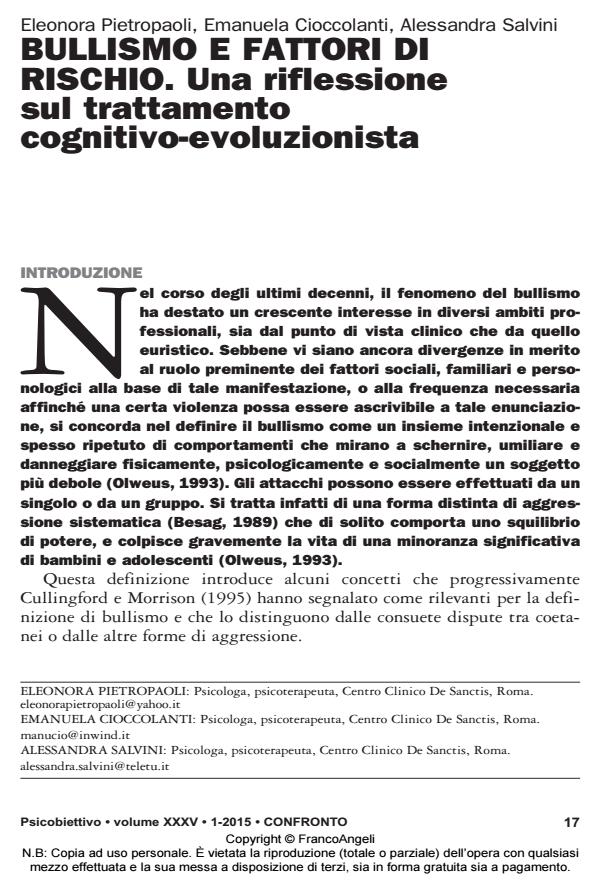Bullying and risk factors. A reflection on the cognitive-evolutional treatment
Journal title PSICOBIETTIVO
Author/s Eleonora Pietropaoli, Emanuela Cioccolanti, Alessandra Salvini
Publishing Year 2015 Issue 2015/1
Language Italian Pages 18 P. 17-34 File size 123 KB
DOI 10.3280/PSOB2015-001002
DOI is like a bar code for intellectual property: to have more infomation
click here
Below, you can see the article first page
If you want to buy this article in PDF format, you can do it, following the instructions to buy download credits

FrancoAngeli is member of Publishers International Linking Association, Inc (PILA), a not-for-profit association which run the CrossRef service enabling links to and from online scholarly content.
In this article the authors expose a brief review on the different forms and ways in which the bullying phenomenon can arise, focusing particularly on the risk factors such as: the individual, temperamental and personological style, family patterns and the quality of early attachment relationships. After reviewing some preventive programs usually applied in scolastic and community contexts whose main purpose is stopping the bullying phenomenon, the authors introduce some clinical considerations on the therapeutic approches focused instead on improving attachment relationships, mental representation and on reducing symptoms caused by traumatic bullying experiences. The cognitive-evolutionist therapy and EMDR therapy are considered, by scientific literature, the evidence based treatments in psychological therapy of disfuncional internal working models and traumatic experiences. These treatments are promoted in association and continuity with the already implemented school-based bullying interventions.
Keywords: Bullying; Risk Factors; Attachment Style; Cognitive-Evolutional Therapy; Trauma; EMDR Therapy
Eleonora Pietropaoli, Emanuela Cioccolanti, Alessandra Salvini, Bullismo e fattori di rischio. Una riflessione sul trattamento cognitivo-evoluzionista in "PSICOBIETTIVO" 1/2015, pp 17-34, DOI: 10.3280/PSOB2015-001002